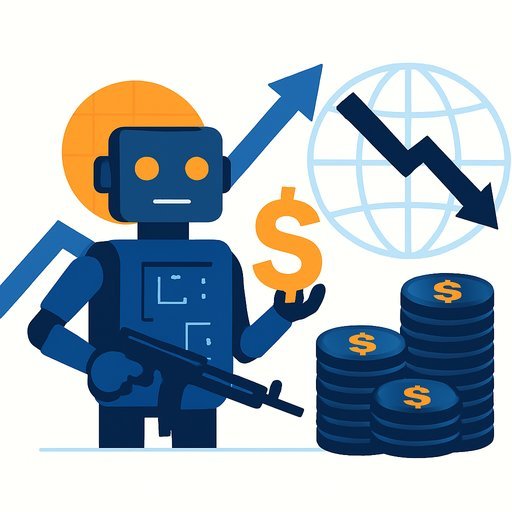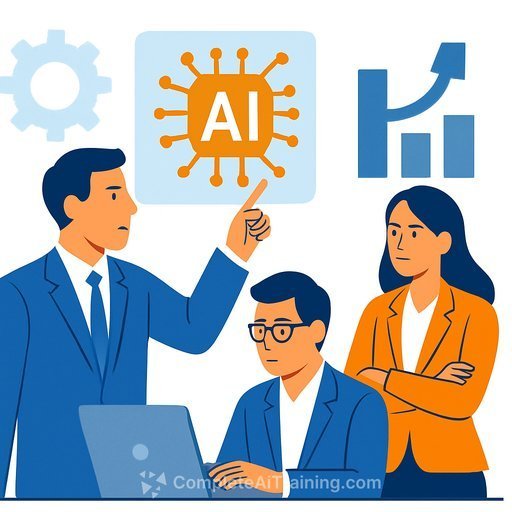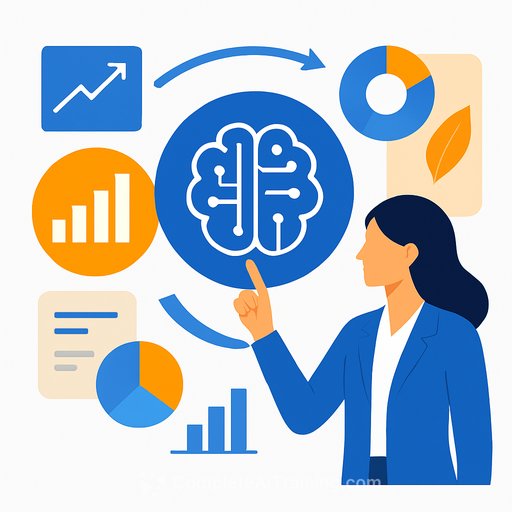AI Won't Kill Jobs - It Will Reshape 32 Million Roles a Year
AI is not a pink-slip machine. It's a redesign engine. A recent Gartner study points to a steep climb starting 2028-2029: about 32 million jobs will need reconfiguration every year as work shifts from human-only tasks to human-AI collaboration.
As Helen Poitevin, Distinguished VP Analyst at Gartner, puts it, "The next era of enterprise performance will not hinge on the quantity of people employed, but on the quality of collaboration between humans and AI." That's the brief for executive teams: build the system where people and intelligent tools compound each other.
The Numbers Executives Need to Plan Around
- 32 million roles redesigned per year by 2029 to adapt to AI.
- Every day, 150,000 jobs evolve through upskilling.
- Every day, 70,000 jobs get rewritten, reworked, and redesigned.
Headcount is no longer the core lever. Job architecture, skill velocity, and human-AI workflows will drive performance.
Choose Your Design: Human-First or AI-First
Gartner's guidance is blunt: "Executive leaders must plan their AI investments and goals to anticipate and manage these changes." Leaders need to decide on their destination - a human-first design that supports people in their work, or an AI-first design that optimizes for efficiency by handing tasks to AI.
This is not either/or. You'll likely run a portfolio of both. The point is to be explicit, by function and by workflow, about which design you're deploying and why.
The Four Scenarios You Must Be Ready to Support
"No matter which scenario executive leaders pursue, they must be ready to support all four," says Poitevin. Expect ripple effects across functions.
- Automation-heavy gap filling: AI handles the repeatable; humans cover exceptions and higher-touch needs. Think customer service when bots hand off to agents.
- AI-first enterprise: Largely autonomous operations with minimal human involvement. Work transforms to fit AI throughput and constraints.
- Everyday AI: Many workers use AI assistants to do the same jobs faster. Task mix shifts; roles stay familiar.
- Frontier collaboration: Humans and AI push into harder problems together. People focus on creativity, judgment, and complex decision-making while AI accelerates analysis and drafting.
Principle: AI-First Succeeds Only If It's People-First
The goal isn't a people-free enterprise - it's a redefined enterprise. Jobs must be designed to work with AI. That includes clarity on accountability, decision rights, feedback loops, and skill pathways. If people don't trust the system, they won't use it well.
A 12-Month Playbook for Executive Teams
- Map the work: Break priority roles into tasks; tag tasks by automation potential, risk, and value.
- Pick pilots: Select 3-5 workflows per function that hit revenue, cost, and risk in equal measure.
- Set design rules: Decide where you're human-first vs. AI-first; document handoffs and guardrails.
- Run all four scenarios: Stand up at least one pilot per scenario to build organizational range.
- Stand up skills infrastructure: Create a skill taxonomy, learning paths, and role transition plans.
- Change management: Train managers to lead workflow redesign, not just tool adoption.
- Governance: Establish data security, model risk, and audit processes from day one.
- Tech stack: Standardize tools, access, and prompt patterns; measure usage and outcomes.
- KPIs and incentives: Tie goals to quality, speed, and risk - not raw automation rates.
- Workforce planning: Budget for reskilling at scale; build on- and off-ramps between roles.
Metrics That Matter
- Task mix ratio: Human-only vs. AI-assisted vs. AI-led tasks per role.
- Time-to-skill: Weeks to reach proficiency in new AI-enabled workflows.
- Augmentation lift: Quality and throughput gains from human-AI pairs.
- Cycle time and error rate: Before/after for key processes.
- Risk and compliance: Exceptions, safety incidents, model drift, audit findings.
- Engagement and adoption: Opt-in rates, usage depth, sentiment.
What This Means for Leaders
The job isn't to predict which roles vanish. It's to redesign how work gets done and to increase the speed of skill change. Treat upskilling as an operating expense, not a perk.
Make a choice: where do you want AI to assist, where should it lead, and where do humans need to take the wheel? Then rewire incentives and workflows to match that choice.
Where to Go Deeper
For broader context on AI's impact on work, see Gartner's topic hub on artificial intelligence: Gartner: Artificial Intelligence. For macro labor-market trends, review the Future of Jobs research from the World Economic Forum: WEF Future of Jobs.
If you're building structured upskilling paths by role, explore curated programs here: Complete AI Training - Courses by Job.
Final Take
The message is not fear - it's foresight. The winners will be the companies that make human-AI collaboration their default, redesign work at the task level, and build skill pipelines that keep pace with change.
Start now. The curve steepens by 2028-2029.
Selected quotes from Helen Poitevin, Distinguished VP Analyst at Gartner:
"The next era of enterprise performance will not hinge on the quantity of people employed, but on the quality of collaboration between humans and AI."
"Every day 150,000 jobs will evolve through upskilling, while 70,000 more jobs will need to be rewritten, reworked and redesigned."
"Executive leaders must plan their AI investments and goals to anticipate and manage these changes."
"They need to decide on their destination - whether to pursue human-first designs that emphasise supporting people in their work, or to select AI-first designs that aim to maximise efficiency by relying on AI to perform tasks."
"No matter which scenario executive leaders pursue, they must be ready to support all four."
Your membership also unlocks:






